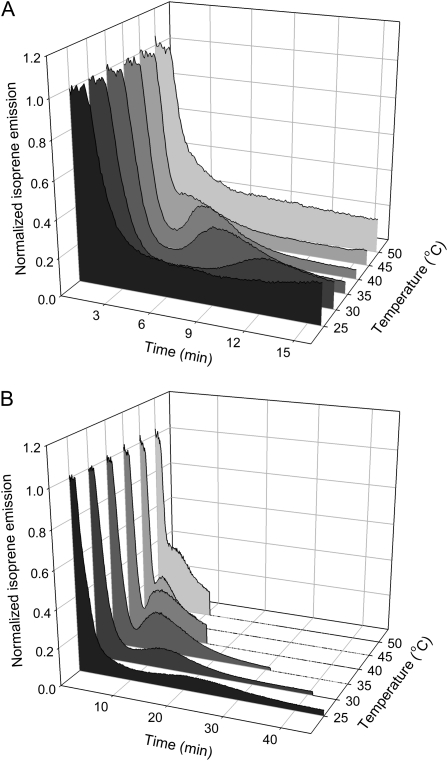Figure 2.
Time of appearance of the postillumination burst is temperature dependent in both oak (A) and poplar (B). In both cases, the peak in the postillumination isoprene emission trace appeared progressively sooner at higher temperatures and merged with the initial decline in isoprene emission at temperatures above 40°C. Light was turned off at 50 s. Isoprene emissions at different temperatures were normalized to predarkness levels. The postillumination period (darkness) in B was intentionally shortened at higher temperatures. This was intended to minimize thermodamage, since heat damage is exacerbated in darkness.

